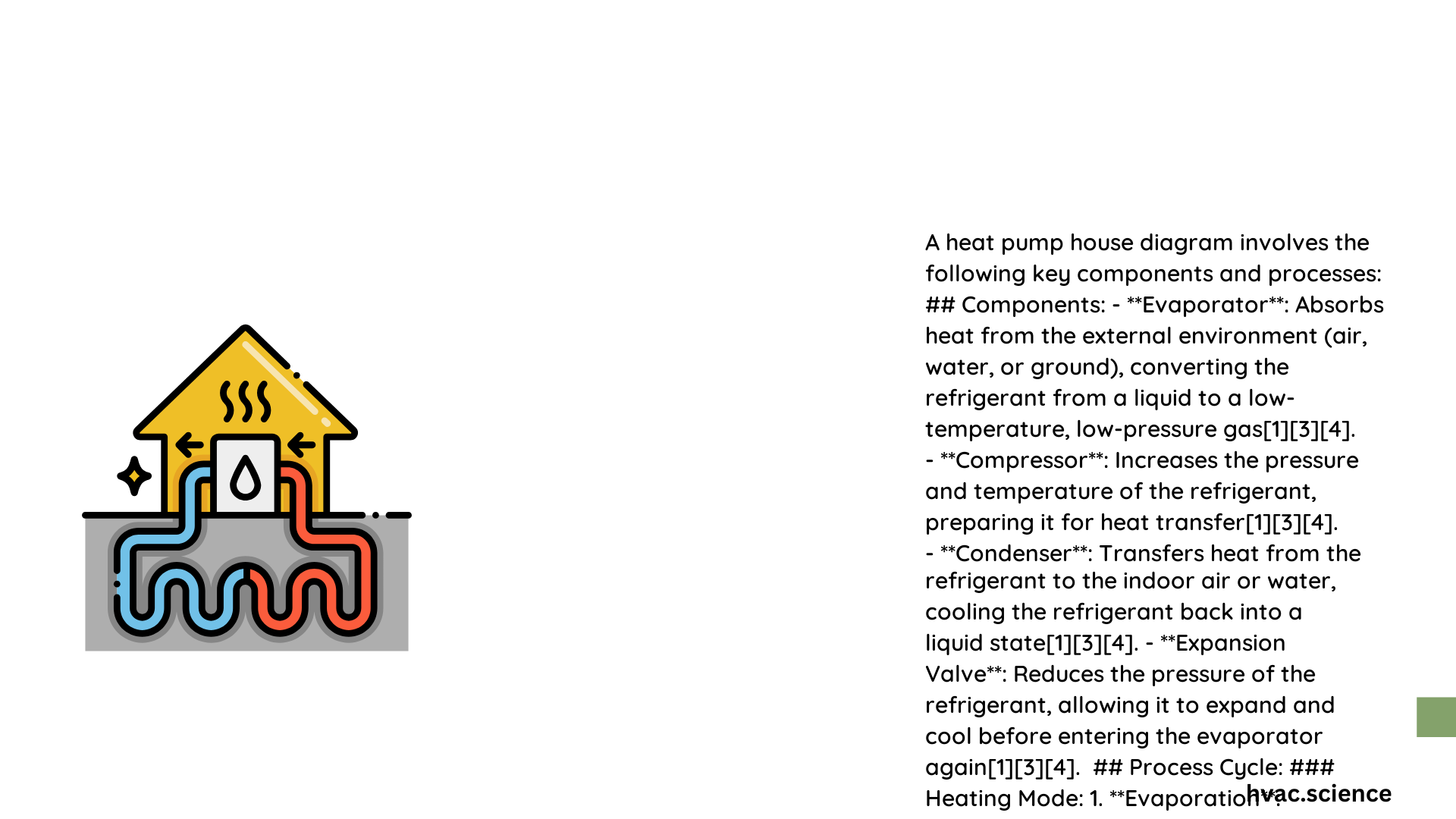A heat pump house diagram provides a comprehensive visual representation of how thermal energy transfers between indoor and outdoor environments, showcasing intricate system components that enable efficient heating and cooling through advanced thermodynamic principles. This sophisticated mechanism transforms ambient temperature into comfortable living spaces while minimizing energy consumption and environmental impact.
What Makes a Heat Pump House Diagram Essential?
Heat pump systems represent cutting-edge technology in residential climate control, offering homeowners unprecedented energy efficiency and sustainable comfort. Understanding their architectural layout becomes crucial for successful implementation.
How Do Heat Pump Components Interact?
Key System Elements
- Outdoor Unit: Primary heat exchange mechanism
- Indoor Unit: Temperature regulation interface
- Refrigerant Lines: Energy transfer conduits
- Compressor: Pressure and temperature modulation component
| Component | Function | Efficiency Range |
|---|---|---|
| Compressor | Refrigerant Pressurization | 80-95% |
| Evaporator | Heat Absorption | 75-90% |
| Condenser | Heat Release | 85-95% |
| Expansion Valve | Pressure Reduction | 70-85% |
What Determines Heat Pump System Placement?
Critical Installation Considerations
- Geographical Location
- Climate zone assessment
- Solar exposure
- Wind patterns
-
Terrain characteristics
-
Structural Requirements
- Foundation stability
- Electrical infrastructure
- Existing HVAC compatibility
How Does Energy Flow Through a Heat Pump?
The thermodynamic cycle represents a sophisticated energy transfer mechanism:
- Absorption Phase
- Refrigerant absorbs external thermal energy
- Temperature transformation occurs
-
Low-pressure liquid transitions
-
Compression Stage
- Refrigerant compressed
- Pressure and temperature increase
-
Energy concentration happens
-
Heat Release
- Thermal energy transferred to interior spaces
- Temperature equalization
- Comfort maintenance
What Technical Specifications Matter?
Performance Metrics
- Coefficient of Performance (COP): 3-5 range
- Seasonal Energy Efficiency Ratio (SEER): 15-22 typical
- Heating Seasonal Performance Factor (HSPF): 8-10 recommended
What Are Potential Installation Challenges?
Mitigation Strategies
- Proper insulation
- Correct system sizing
- Professional assessment
- Regular maintenance
- Zonal temperature management
How Can Homeowners Optimize Heat Pump Efficiency?
- Select appropriate system type
- Ensure professional installation
- Maintain consistent temperatures
- Implement smart thermostat technology
- Regular professional inspections
Conclusion

A comprehensive heat pump house diagram reveals the intricate dance of thermal energy transfer, demonstrating how advanced engineering transforms environmental conditions into personalized comfort zones.
Technical Specifications Summary
- Average Efficiency: 300-400% compared to traditional systems
- Energy Savings: 30-60% reduction in heating/cooling costs
- Environmental Impact: Significantly reduced carbon footprint
